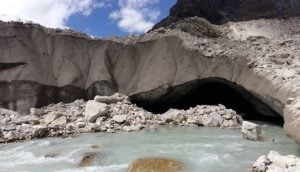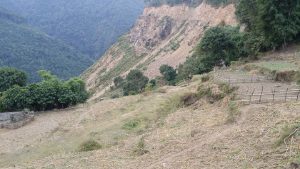For Nabiha Amjad, mother of four, a day with four-hour electricity cuts is a good day; sometimes the hours without electricity stretch endlessly without hope of light. But things may soon change for the better for the Amjad family and others like them across Pakistan, or so the government says.
Last week, the government announced “zero load-shedding” (black outs) for more than 15 million consumers. Sardar Awais Ahmed Leghari, the minister of power, told the media that 5,297 out of 8,600 feeders across the country will observe zero load-shedding at the strike of midnight on December 3. But power outages will continue in areas where power thefts continue.
“There may be a policy to starve the feeders that have a poor record of payments and recoveries,” says energy expert Vaqar Zakaria, chief executive officer of Haigler Bailly. A recovery-based load-shedding policy has been pursued, quite successfully, in Karachi by the privately-owned electricity distribution company K-Electric for several years.
But even theft may no longer be a problem. Given the increase in installed capacity, Zakaria foresees a situation where “there will be enough supply available to meet the demand, inclusive of theft and unpaid electricity”.
“Additions to the grid will be in the order of 6,000 MW in 2017-18; 3,500 in 2018-19, 2,000 MW in 2109-20, and 7,000 in 2020-21. Additions in the first three years are predominantly from coal (70%) and some gas (20%), but will shift to hydroelectric later on as hydropower projects under construction are commissioned,” says Zakaria. “Solar and wind capacity additions will account for remaining capacity. Additions from the fourth year onwards will be predominantly hydroelectric with Thar coal and solar also added in.”

Though not a PML-N voter, Amjad, who lives in the relatively new and affluent Johar Town area, hopes her area feeder will be among the 5,000 chosen to provide her home with an uninterrupted supply of electricity.
When Amjad returned to the country in 2008, after spending 16 years in Abu Dhabi where all basic amenities are available at the press of a button, Pakistan was at the peak of a massive electricity crisis.
“There were times when we were without power for up to 16 hours a day; at times I thought I’d lose my mind!” she recalled. But the family got “used to it and managed to turn their lives around to the loadshedding schedule”. Uninterruptible power supply batteries certainly made the city slightly more liveable. There were weeks of respite when they enjoyed uninterrupted supply from the mains but this was worse as “living in uncertainty is far more uncomfortable”.
Scores of families like Amjad’s have learned to live with intermittent power supply across the country. Cooking times, meal times, entertaining guests, weddings, visit to markets – everything – is geared to match the load-shedding schedules.
“Once a week, I would plan to eat dinner at my parent’s home as I wanted to watch a TV serial during that time and my area would be without electricity,” says Huma Khawar, an Islamabad based development consultant.

Soon after the minister’s announcement last week, the world of Twitter came alive; some circumspect, some all praises for the government.
But some are more cautious.
“Supply can be incremental or lumpy,” says economist Kaiser Bengali. “Additions to power are generally lumpy, with each plant generating, say, 300-plus MW. So if the shortfall is 3,000 MW and ten 300 MW plants come into operation simultaneously, the deficit can turn into surplus overnight. Maybe this has happened.”
Hassan Abbas, an environmentalist, agrees that it may not be “difficult for the government to let all cylinders fire together for a short while to make a political statement” and then go back to the old routine with electricity playing hide-and-seek with the people. “This short term measure of providing people with electricity a few months before elections may well do the trick,” he added.
Transmission travails
Bengali wants to know how all this power will be transmitted.
“We need to know the story on transmission. After all, power cannot be transported in boxes!” he says. “It is not just a matter of laying new transmission lines; even many of the existing ones are sub-standard and suffer regular burn outs.” Half of Balochistan, he points out is without any transmission line. “Should they join in with the power surplus celebrations?”

“This government has not procrastinated on power; this was their election strategy, and they have been out to create a win-win for themselves unlike past regimes.”
Unlike Bengali, he sees transmission as less of a problem since the new plants are located inland near the demand centres like the LNG plants and coal-fired plant in Sahiwal – although the matter of the country’s carbon footprint has been completely disregarded while transporting coal over long distances.
As for the hydroelectricity capacity in the north, Zakaria points out that it will not need to be transmitted southwards since coal plants will provide the necessary power. The surplus power from south, however, can eventually be transmitted through the under-construction high-voltage, direct current (HVDC) electric power transmission system lines under construction, if need be.
Outdated and expensive technologies
There are still questions out there. Abbas is baffled by the increase in 8.7 GW of installed capacity through the use of “outdated stuff” when there are technologies that are cheaper to install and operate, and can be constructed and commissioned much quicker.
“Nobody will tell us the true cost of these projects which also include, besides the principal loan, interests and economic externalities,” he says.
According to Abbas, China installed 88 GW of solar capacity in 2016-17 alone. Tesla installed a 100 MW battery storage for wind farms in South Australia in less than 100 days and undertook similar projects in Nevada, California, and Haiti.
“And here we are, in Pakistan, bent on investing in energy projects based on outdated technology costing us anywhere between PKR 400 (USD 3.79) to PKR 900 (USD 8.50)/kWh of installation,” points out Abbas. It is unfortunate, he says, that China is “helping” Pakistan with “outdated technology [coal]” but back home they are going on a “binge” of installing solar at less than 10 cents per kWh.
While newer technologies may be quicker and cheaper, those making decisions are reluctant to go down that path. “They know how to get kickbacks and commissions in a particular type of project, and would prefer to have that kind of project coming and avoid newer technologies which would require a newer learning curve for corruption,” he says scathingly.
Surplus supply
A figure of 90% access to electricity is conceivable, says Zakaria. The government can use the surplus power for anyone, anywhere. “The medium-sized hydroelectric projects [less than 100 MW] coming in after four years in Khyber Pakhtunkhwa, Gilgit-Baltistan and Pakistan-administered Kashmir will not only improve grid access, but take the load off the main grid.”
But more than questioning the surplus supply, figuring out how much grid capacity is enough is important. Sadly, says Zakaria, “the planners are clueless on this”.
Why coal, why now?
The reasons for riding on coal, imported LNG and even hydroelectric power projects are varied. According to Zakaria, “the drivers are political, with Punjab and Sindh pushing for capacity, businesses such as Engro and Manshas pushing for projects, and shortages combined.
“At the same time the shift to hydroelectric has more to do with worrying about the balance of payments than the environment.” The Diamer Basha dam, for example, has not been given the priority it demanded and could have provided power and food security. But, “this long term project does not yield election benefits”, says Zakaria candidly.
When coal plants were acquired, the prices of solar and wind based capacity were very high, says Zakaria: “The situation has changed dramatically in the last few years. It is the classic case of inertia in planning that results in poor decisions. The politicians and businesses do not realise or recognise that commitments are being made for 30 years to buy power, while shortages are a near term issue.”
![<p>Is the age of having no electricity for hours at a time coming to an end in Pakistan? [image by: Adil Siddiqui]</p>](https://www.thethirdpole.net/content/uploads/2017/12/IMG_5639-300x200.jpg)




